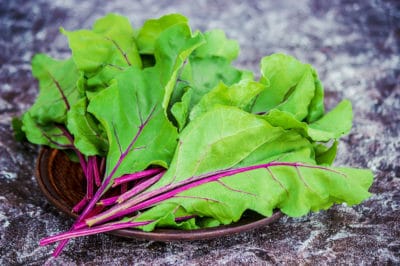Crispy and fresh to consume
Delicate chard leaves that grow in your own bed are crisp, fresh and full to the brim with vitamins. To process them in this state to delicious dishes is optimal.
You should therefore only pick these vegetables if you use them for cooking immediately afterwards. The same applies to sensible freezing when the harvest exceeds current consumption.
With supermarket goods you should also pay attention to freshness. The high season in summer seduces with low prices. But the warm air temperature quickly causes a loss of moisture and causes the leaves to wilt. Buy only bulbous-looking chard and build up a cheap, frozen supply for the winter.
The best preservation method: freezing
Always remember that fresh chard can only be stored temporarily in the refrigerator for a very short time. If you can already see that the preparation is not possible so quickly, another storage method must be used. Freezing is then the salvation, as it can save most of the valuable ingredients and even the green color for a long time.
Prepare –sheets
- Cut off all dry stem ends.
- Wash the mangold thoroughly several times until no more soil and sand residues adhere to the leaves.
- Separate thick stalks from green leaves
- Cut the stems into small bite-sized pieces.
- Cut the leaves into fine or coarse strips according to your preference. However, do not mix them with the stems yet.
First blanch, then freeze.
The tender leaves and the thick stems must be placed separately in boiling water, as they require different lengths of time.
- blanch the stems for 2-3 minutes
- Blanch leaves for 1 minute
- in a large pot with lightly salted water
- quench in ice water
These are the advantages of the hot bath
The features listed below, which blanching gives deep-frozen vegetables, are convincing arguments in favour of this step:
- the colour is retained
- Mangold “shrinks”, needs less space in the chest
- Vitamins are spared
- freezing chard properly
The blanched and cooled chard should first drip off well. It can also be carefully patted dry with kitchen paper.
Divide the amount of mangold into smaller portions. Place them in suitable, well sealable containers. In terms of environmental friendliness, these may also be made of glass. Cleaned jam jars, for example, are excellently suited as containers for frozen goods.
Hint
Do not fill glasses to the brim, as the frozen contents will still expand a little. You could explode in the freezer.
Durability and defrosting
Frozen chard can be left in the freezer for 8 to 12 months. It does not have to thaw, but can be added to the boiling food deep-frozen. In it it continues to cook within a few minutes.
Conclusion for quick readers
- Preserve: Fresh chard is not storable for a long time, so freezing is the best method of preservation.
- Ideal time: Summer is the mangold season and the optimal time to freeze harvest surplus or cheap purchases.
- Prerequisite: Only fresh and crisp leaves offer best quality, also for the freezer.
- Preparation: cut off dry stalk ends; wash chard thoroughly; separate stalks from green
- Preparation: cut stems into bite-sized pieces, cut leaves into strips; do not mix leaves and stems.
- Blanching: Add to salted and boiling water; cook stalks for 2 to 3 minutes; leaves only 1 minute
- Quenching: Place blanched chard directly in ice water and cool down; then remove immediately.
- Advantages: Colour is retained; vitamins are spared; “shrunken” chard requires less space
- Portion it: Drain chard well at first; then divide into smaller portions;
- Filling: fill suitable containers with mangold; environmental aspects also speak for glass glasses
- Tip: Do not fill the glass container full to the brim; frozen goods expand and can cause them to burst.
- Freeze it: Label container with contents and date; put into freezer immediately
- Shelf life: Frozen chard can be kept for between 8 and 10 months.
- Defrost: Use directly from the freezer and add frozen to cooking dishes.
